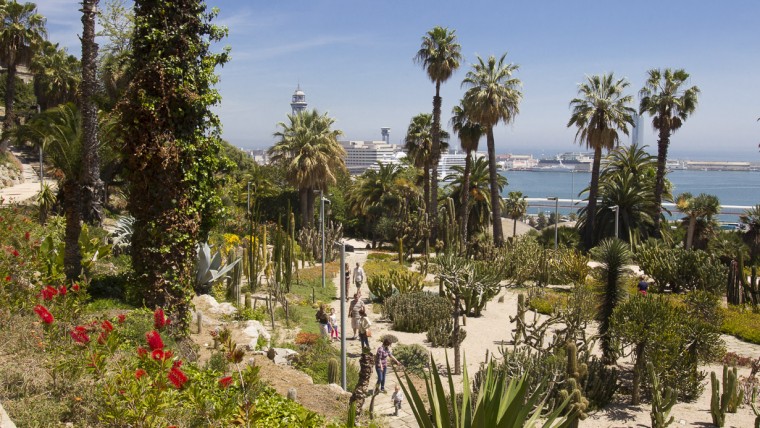
The Mossèn Costa i Llobera Gardens offer a spectacular panoramic view of the city’s coastline and port. The refurbishment they recently underwent has made a considerable improvement to the central access point, previously used as a service entrance, with two new gates for visitors.
The gardens are a privileged outdoor classroom that allows visitors to discover the evolutionary strategies of succulent plants, which have created varieties specialising in low water consumption.

History
The Jardins Costa i Llobera are the result of a joint project by the architect Joaquim Maria Casamor and the gardening-school teacher, professional and expert in succulent plants, Joan Pañella. Work had already been going on for several years to adapt these species to the city. When the option of smartening up the part of Montjuïc that is now the site of the gardens was being considered, there was already an important collection of species originating from the Canary Islands, Andalusia and nurseries of other Mediterranean cities. Several plants had also come from the Pallanca collection in Italy.
The Mossèn Costa i Llobera Gardens were officially opened in March 1970 but have gone through a long process of recovery, remodelling and restoration ever since. Thanks to structural consolidation and the replanting of a good number of plants damaged by the cold, the gardens are now back to their original splendour.
They offer a collection that is unique in the world: 3.16 hectares for a journey through some of the most exotic species found on the planet, not just in subdesert, desert and tropical areas but also in high mountain regions too.
-
- Phone number
- Tel.: 010
-
- Titularity
- Public center
- Address:
- Ctra Miramar, 38
- Districte:
- Sants-Montjuïc
- Neighborhood:
- el Poble-sec
- City:
- Barcelona
Timetable
| Periode | Dies | Hores | |
|---|---|---|---|
Horari d'hivern de l'1 de novembre al 31 de març |
Cada dia | de 08.00 h a 19.00 h | |
Horari d'estiu de l'1 d'abril al 31 d'octubre |
de 08.00 h a 21.00 h |
aproximada, en funció de
l'horari solar (tanquen
quan es fa fosc, al capvespre)

